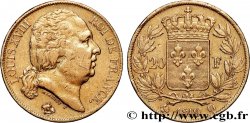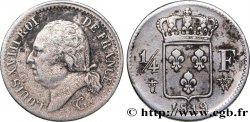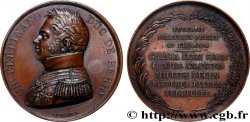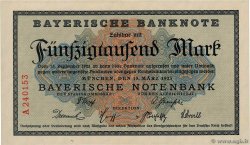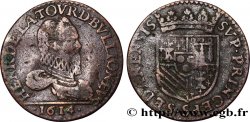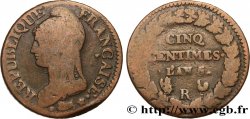E-auction 443-354569 - fme_412373 - LOUIS XVIII Médaille, Statue équestre d’Henri IV
Чтобы принять участие в торгах, вы должны войти в систему и стать подтвержденным участником аукциона. Войдите, чтобы сделать ставку. Ваш аккаунт будет подтвержден в течение 48 часов. Не ждите до закрытия торгов, чтобы зарегистрироваться.Сделав ставку на данный товар, вы вступаете в юридическое соглашение на покупку выбранного товара и нажатием кнопки «Сделать ставку» подтверждаете принятие вами условий интернет-аукционов cgb.fr.
Ставка может бить сделана только в полном эквиваленте евро. Торги закроются согласно времени, указанному в описании товара, все ставки, сделанные после закрытия торгов, учитываться не будут. Не следует откладывать предложение вашей ставки до последнего момента, так как система может не успеть обработать вашу заявку, и ваша ставка не будет принята. Более детальную информацию вы найдёте здесь: FAQ по интернет-аукционам.
БЕСПЛАТНО.
БЕСПЛАТНО.
| Оценить : | 150 € |
| Цена : | 85 € |
| Максимальная предлагаемая цена : | 155 € |
| Конец торгов : | 11 October 2021 18:42:30 |
| Участников : | 8 Участников |
Тип Médaille, Statue équestre d’Henri IV
Дата: c.1817
Монетный двор / Город: 75 - Paris
Металл: bronze
Диаметр: 50,5 mm
Ориентация осей монеты: 12 h.
Гравер ANDRIEU Jean-Bertrand (1761-1822)
Вес: 55 g.
Век: lisse
Пуансон: sans poinçon
Комментарии о состоянии
Superbe médaille avec de très fin reliefs et une agréable patine de collection avec quelques traces de circulation
Ссылки в каталоге: :
Лицевая сторона
Аверс: легенда: LVDOVICVS. XVIII. LAPIDEM. AVSPICALEM. POSVIT / D. XXVIII.M.OCT. ANN. MDCCCXVII. REGNI. XXIII.
Аверс: описание: Buste nu à droite ; sur le col, signature ANDRIEU F..
Обратная сторона
Реверс: легенда: HENRICO / MAGNO ; À L’EXERGUE CIVIVM. PIETAS. RESTITVIT / MDCCCXVII.
Реверс: Описание: Dans le champ, statue équestre à gauche sur un piédestal timbré d’un bas-relief représentant le siège de Paris ; signature à droite ANDRIEU. FECIT.
Комментарий
Par cette série de médailles, Louis XVIII affirme sa parenté avec le populaire Henri IV.
La première statue équestre d'Henri IV est exécutée par Giambologna et Pietro Tacca, elle fait partie de la composition de la place Dauphine et est inaugurée en 1614. Elle comportait à chacun des angles de son piédestal une statue d'esclave, de style maniériste, réalisée par Pierre de Francqueville. Cette première statue équestre est abattue en 1792 pendant la Révolution française pour faire des canons. Les statues des captifs se trouvent désormais au musée du Louvre.
La statue actuelle est l'œuvre du sculpteur François-Frédéric Lemot ; elle fut inaugurée le 25 août 1818. Lors de cette nouvelle érection, plusieurs objets furent placés à l'intérieur de la statue. Des documents en parchemin relatifs à l'inauguration de la statue, 26 médailles, 3 ouvrages sur Henri IV. L'ensemble était placé dans le ventre du cheval et se trouve aujourd'hui conservé dans l'Armoire de fer aux Archives nationales, Musée de l'histoire de France. Voici la liste des 18 pièces suivant les côtes des Archives nationales :
AE/I/15bis/1/1 à 6 - Boîte de plomb à âme de bois ayant contenu les parchemins relatifs à l'inauguration de la statue d'Henri IV au Pont-Neuf et les documents sur parchemin.
AE/I/15bis/2/1 à 2 - Boîte de plomb à âme de bois ayant contenu les Économies royales de Maximilien de Béthune, duc de Sully, 2 volumes in-folio reliés par Simier, relieur du roi, veau rouge et dorures, armes de France.
AE/I/15bis/3/1 à 2 - Boîte de plomb à âme de bois ayant contenu La Henriade de Voltaire, exemplaire sur vélin relié par René Simier, était en maroquin bleu, "avec dentelles, compartimens et armes de France". La reliure a disparu, soit par décomposition, soit par agglutination avec un des pans de la boîte en bois.
AE/I/15bis/4/1 à 3 - Boîte de plomb à âme de bois ayant contenu Histoire du roi Henri le Grand, par Hardouin de Péréfixe, Renouard, Paris, 1816, 1 volume in 8o relié par Simier, relieur du roi, en maroquin vert, avec dentelle et tranche dorée. Volume en très bon état de conservation, reliure de très belle exécution et 26 médailles (argent, bronze et platine).
AE/I/15bis/5/1 à 5 - 4 boîtes cylindriques (étain ou bois) et un rouleau de parchemin.
L'édifice est classé au titre des monuments historiques en 1992.
With this series of medals, Louis XVIII asserts his kinship with the popular Henri IV.
The first equestrian statue of Henry IV was executed by Giambologna and Pietro Tacca, it is part of the composition of the Place Dauphine and was inaugurated in 1614. It had at each corner of its pedestal a statue of a slave, in Mannerist style, made by Pierre de Francqueville.. This first equestrian statue was destroyed in 1792 during the French Revolution to make cannons.. The statues of the captives are now in the Louvre Museum.
The current statue is the work of the sculptor François-Frédéric Lemot; it was inaugurated on August 25, 1818. During this new erection, several objects were placed inside the statue. Parchment documents relating to the inauguration of the statue, 26 medals, 3 works on Henry IV. The whole thing was placed in the horse's belly and is now preserved in the Iron Cabinet at the National Archives, Museum of French History. Here is the list of the 18 pieces according to the National Archives references: AE/I/15bis/1/1 to 6 - Lead box with a wooden core containing the parchments relating to the inauguration of the statue of Henri IV at the Pont-Neuf and the documents on parchment.
AE/I/15bis/2/1 to 2 - Lead box with a wooden core containing the Royal Economies of Maximilien de Béthune, Duke of Sully, 2 folio volumes bound by Simier, bookbinder to the king, red calf and gilding, arms of France.
AE/I/15bis/3/1 to 2 - Lead box with a wooden core that contained Voltaire's Henriade, a copy on vellum bound by René Simier, was in blue morocco, \\\"with lace, compartments and the arms of France\\\". The binding has disappeared, either through decomposition or through sticking to one of the sides of the wooden box..
AE/I/15bis/4/1 to 3 - Lead box with a wooden core containing History of King Henry the Great, by Hardouin de Péréfixe, Renouard, Paris, 1816, 1 volume in 8o bound by Simier, bookbinder to the king, in green morocco, with lace and gilt edge. Volume in very good condition, beautifully executed binding and 26 medals (silver, bronze and platinum).
AE/I/15bis/5/1 to 5 - 4 cylindrical boxes (tin or wood) and a roll of parchment.
The building was listed as a historic monument in 1992.
La première statue équestre d'Henri IV est exécutée par Giambologna et Pietro Tacca, elle fait partie de la composition de la place Dauphine et est inaugurée en 1614. Elle comportait à chacun des angles de son piédestal une statue d'esclave, de style maniériste, réalisée par Pierre de Francqueville. Cette première statue équestre est abattue en 1792 pendant la Révolution française pour faire des canons. Les statues des captifs se trouvent désormais au musée du Louvre.
La statue actuelle est l'œuvre du sculpteur François-Frédéric Lemot ; elle fut inaugurée le 25 août 1818. Lors de cette nouvelle érection, plusieurs objets furent placés à l'intérieur de la statue. Des documents en parchemin relatifs à l'inauguration de la statue, 26 médailles, 3 ouvrages sur Henri IV. L'ensemble était placé dans le ventre du cheval et se trouve aujourd'hui conservé dans l'Armoire de fer aux Archives nationales, Musée de l'histoire de France. Voici la liste des 18 pièces suivant les côtes des Archives nationales :
AE/I/15bis/1/1 à 6 - Boîte de plomb à âme de bois ayant contenu les parchemins relatifs à l'inauguration de la statue d'Henri IV au Pont-Neuf et les documents sur parchemin.
AE/I/15bis/2/1 à 2 - Boîte de plomb à âme de bois ayant contenu les Économies royales de Maximilien de Béthune, duc de Sully, 2 volumes in-folio reliés par Simier, relieur du roi, veau rouge et dorures, armes de France.
AE/I/15bis/3/1 à 2 - Boîte de plomb à âme de bois ayant contenu La Henriade de Voltaire, exemplaire sur vélin relié par René Simier, était en maroquin bleu, "avec dentelles, compartimens et armes de France". La reliure a disparu, soit par décomposition, soit par agglutination avec un des pans de la boîte en bois.
AE/I/15bis/4/1 à 3 - Boîte de plomb à âme de bois ayant contenu Histoire du roi Henri le Grand, par Hardouin de Péréfixe, Renouard, Paris, 1816, 1 volume in 8o relié par Simier, relieur du roi, en maroquin vert, avec dentelle et tranche dorée. Volume en très bon état de conservation, reliure de très belle exécution et 26 médailles (argent, bronze et platine).
AE/I/15bis/5/1 à 5 - 4 boîtes cylindriques (étain ou bois) et un rouleau de parchemin.
L'édifice est classé au titre des monuments historiques en 1992.
With this series of medals, Louis XVIII asserts his kinship with the popular Henri IV.
The first equestrian statue of Henry IV was executed by Giambologna and Pietro Tacca, it is part of the composition of the Place Dauphine and was inaugurated in 1614. It had at each corner of its pedestal a statue of a slave, in Mannerist style, made by Pierre de Francqueville.. This first equestrian statue was destroyed in 1792 during the French Revolution to make cannons.. The statues of the captives are now in the Louvre Museum.
The current statue is the work of the sculptor François-Frédéric Lemot; it was inaugurated on August 25, 1818. During this new erection, several objects were placed inside the statue. Parchment documents relating to the inauguration of the statue, 26 medals, 3 works on Henry IV. The whole thing was placed in the horse's belly and is now preserved in the Iron Cabinet at the National Archives, Museum of French History. Here is the list of the 18 pieces according to the National Archives references: AE/I/15bis/1/1 to 6 - Lead box with a wooden core containing the parchments relating to the inauguration of the statue of Henri IV at the Pont-Neuf and the documents on parchment.
AE/I/15bis/2/1 to 2 - Lead box with a wooden core containing the Royal Economies of Maximilien de Béthune, Duke of Sully, 2 folio volumes bound by Simier, bookbinder to the king, red calf and gilding, arms of France.
AE/I/15bis/3/1 to 2 - Lead box with a wooden core that contained Voltaire's Henriade, a copy on vellum bound by René Simier, was in blue morocco, \\\"with lace, compartments and the arms of France\\\". The binding has disappeared, either through decomposition or through sticking to one of the sides of the wooden box..
AE/I/15bis/4/1 to 3 - Lead box with a wooden core containing History of King Henry the Great, by Hardouin de Péréfixe, Renouard, Paris, 1816, 1 volume in 8o bound by Simier, bookbinder to the king, in green morocco, with lace and gilt edge. Volume in very good condition, beautifully executed binding and 26 medals (silver, bronze and platinum).
AE/I/15bis/5/1 to 5 - 4 cylindrical boxes (tin or wood) and a roll of parchment.
The building was listed as a historic monument in 1992.








 Cообщить об ошибке
Cообщить об ошибке Распечатать страницу
Распечатать страницу Отправить мой выбор
Отправить мой выбор Задать вопрос
Задать вопрос Consign / sell
Consign / sell
 Информация
Информация